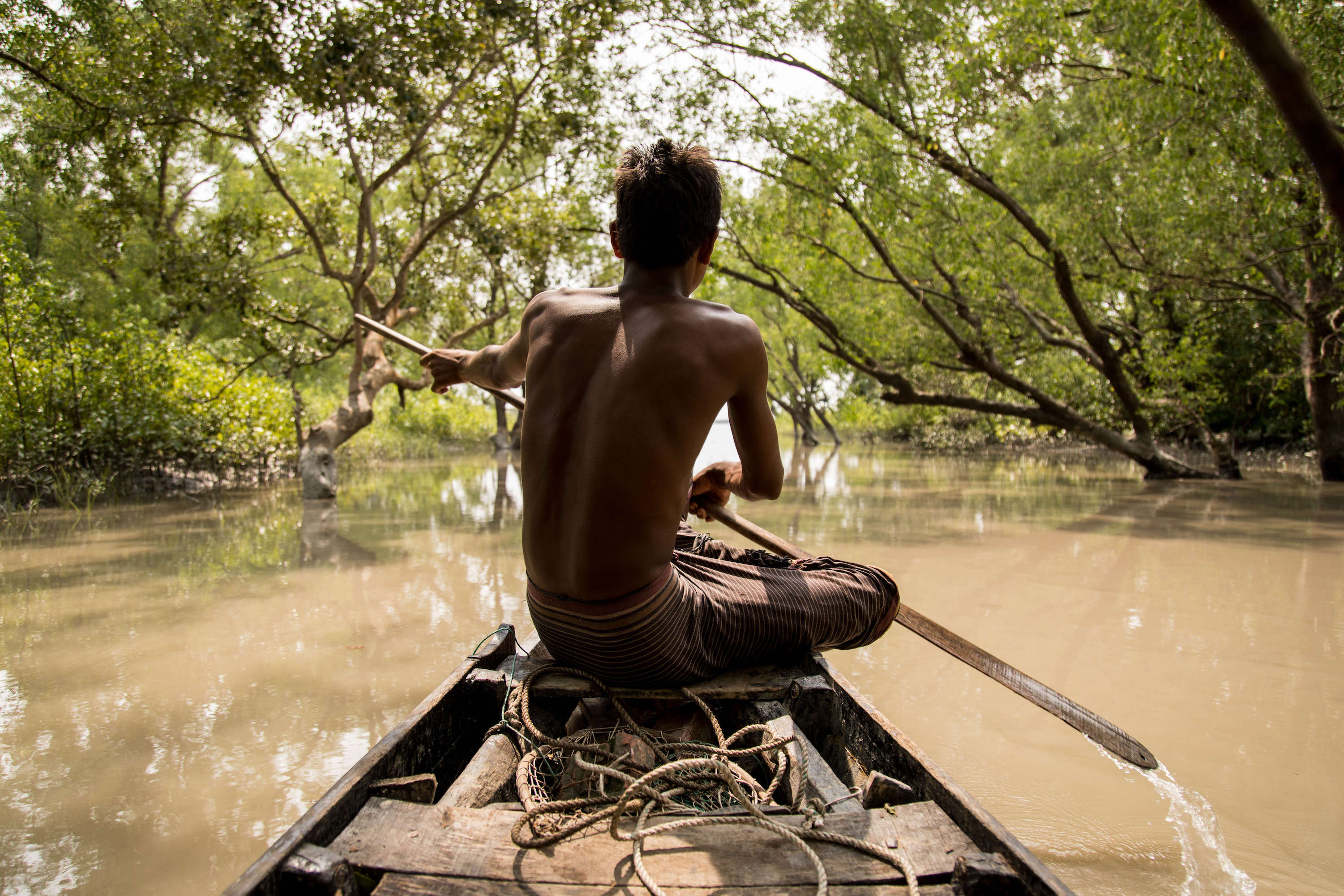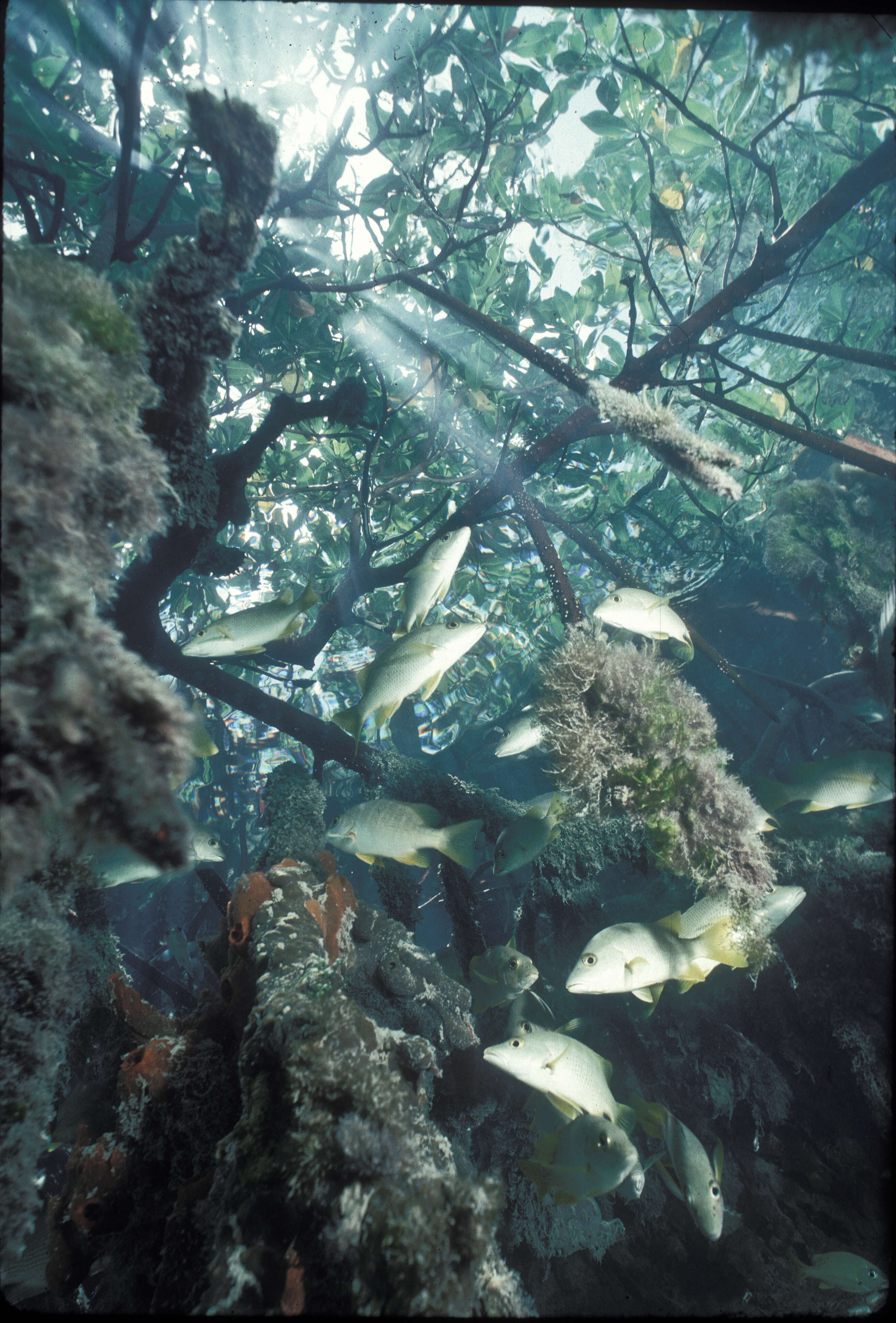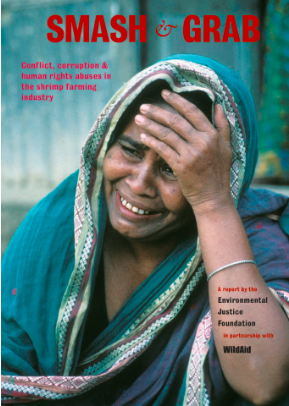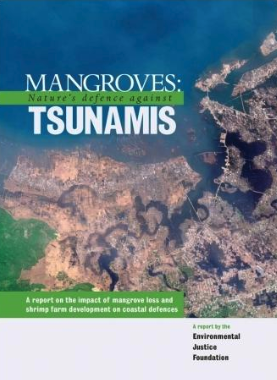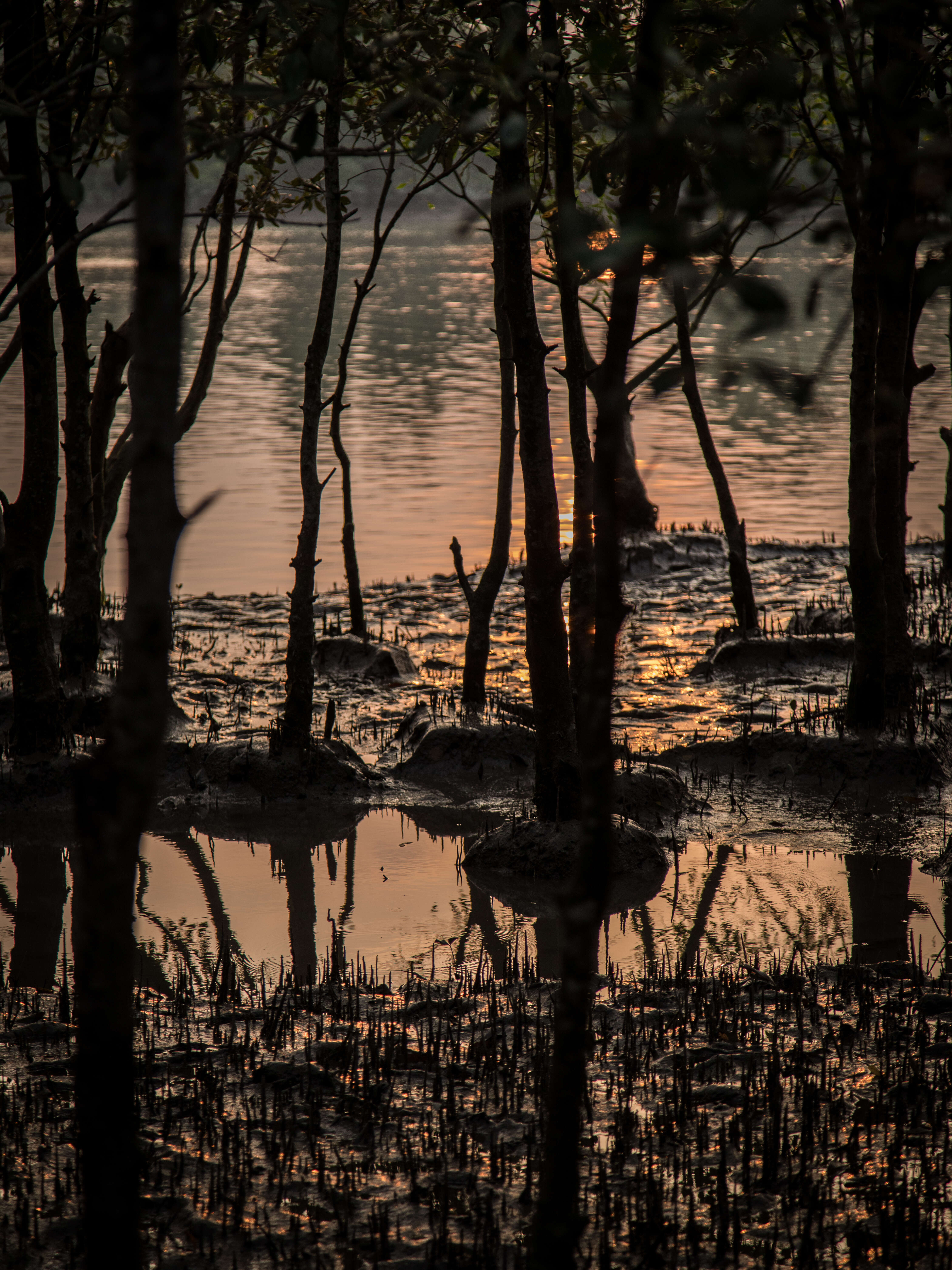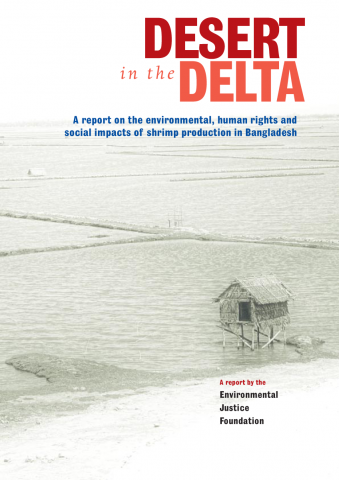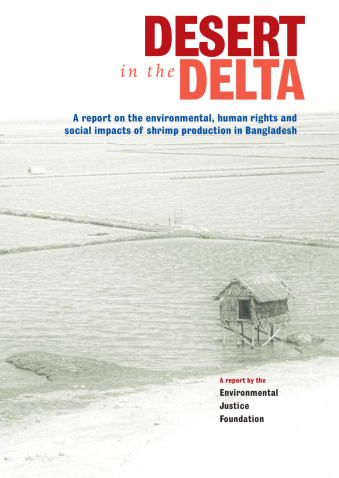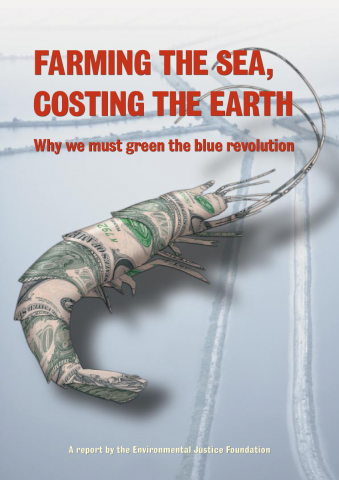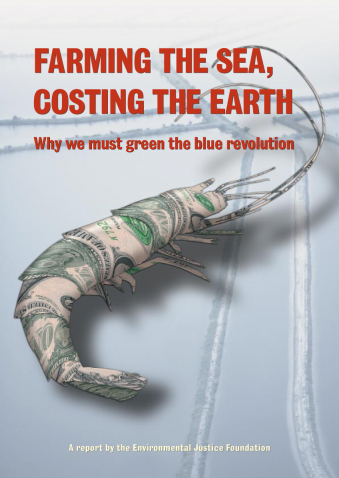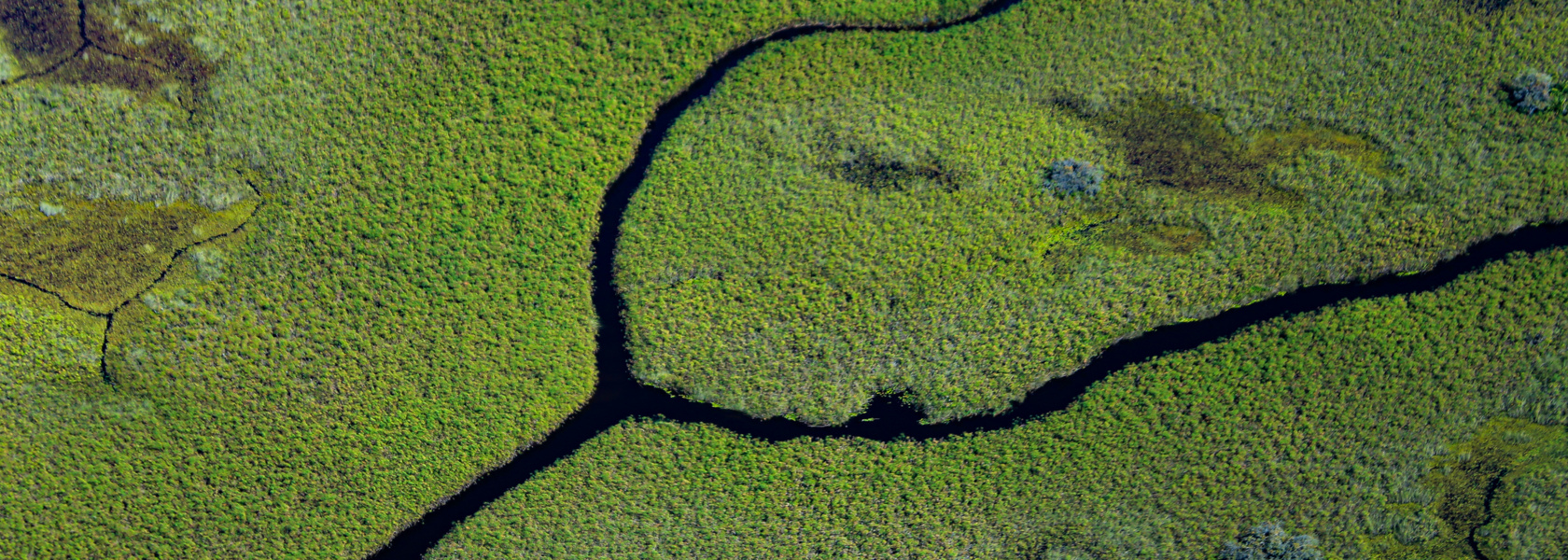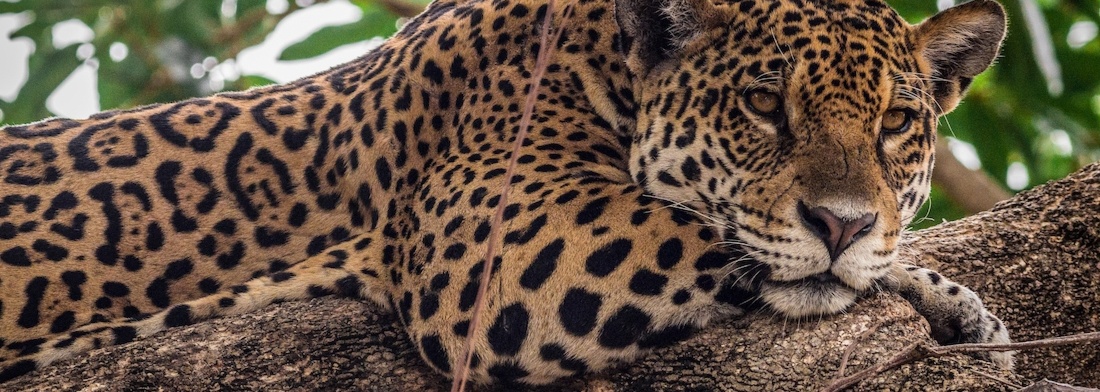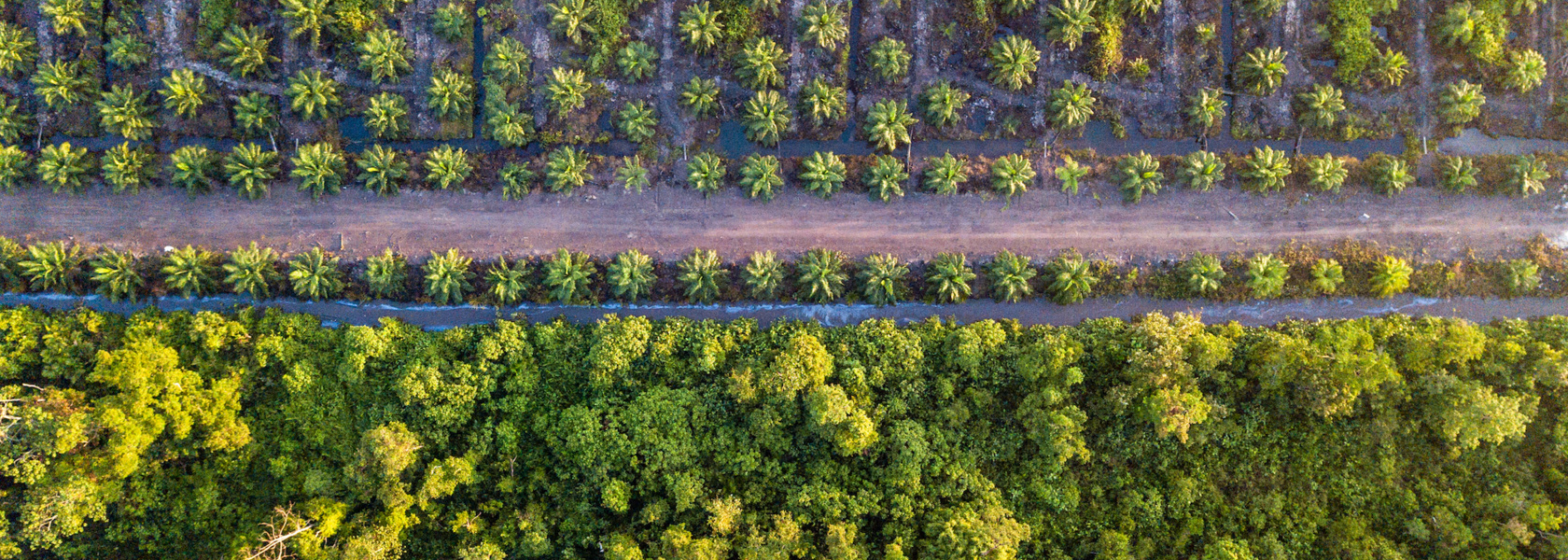Mangroves cover only 0.1% of the Earth’s land, but their benefits to humans and wildlife are as numerous and interwoven as their dense roots. These critical ecosystems support a huge range of marine wildlife, mitigate climate change through carbon storage, provide food and livelihoods for coastal communities and help protect people from flooding and storms.
EJF is campaigning to halt the rapid loss of the world’s mangroves, which is having a devastating effect both locally and globally.
The life-giving benefits of mangroves
Thriving in salty intertidal waters, where few other plants can grow, mangrove forests create far more benefits than first meet the eye. Underwater, their tangled roots provide breeding grounds, nurseries and habitats for a wide variety of fish, crabs, oysters and shrimps. These species are a vital source of food and livelihoods for coastal communities.
Mangrove trees are the gatekeepers to immense carbon reserves, trapped in flooded soils. Studies show that mangroves can store up to four times more carbon than rainforests per hectare, making them critical in the climate crisis. The deforestation and degradation of mangroves is ecocidal in the amount of CO2 it releases into the atmosphere: between 2000 and 2012, 300 million tonnes of CO2 is estimated to have been let loose through mangrove destruction.
As the climate crisis hits the tropics in the menacing forms of storm surges and cyclones, mangroves are nature’s great defence line – protecting homes and farmland. Waves can lose two thirds of their height when they hit mangroves; against the rising tide of climate change, these trees are indispensable.
Life-sustaining supplies
For Indigenous coastal communities, mangrove forests supply crucial staples of life. The wood – which is resistant to rot and insects – is used locally for construction and fuel; plants are gathered for medicinal purposes, and leaves used as animal fodder.
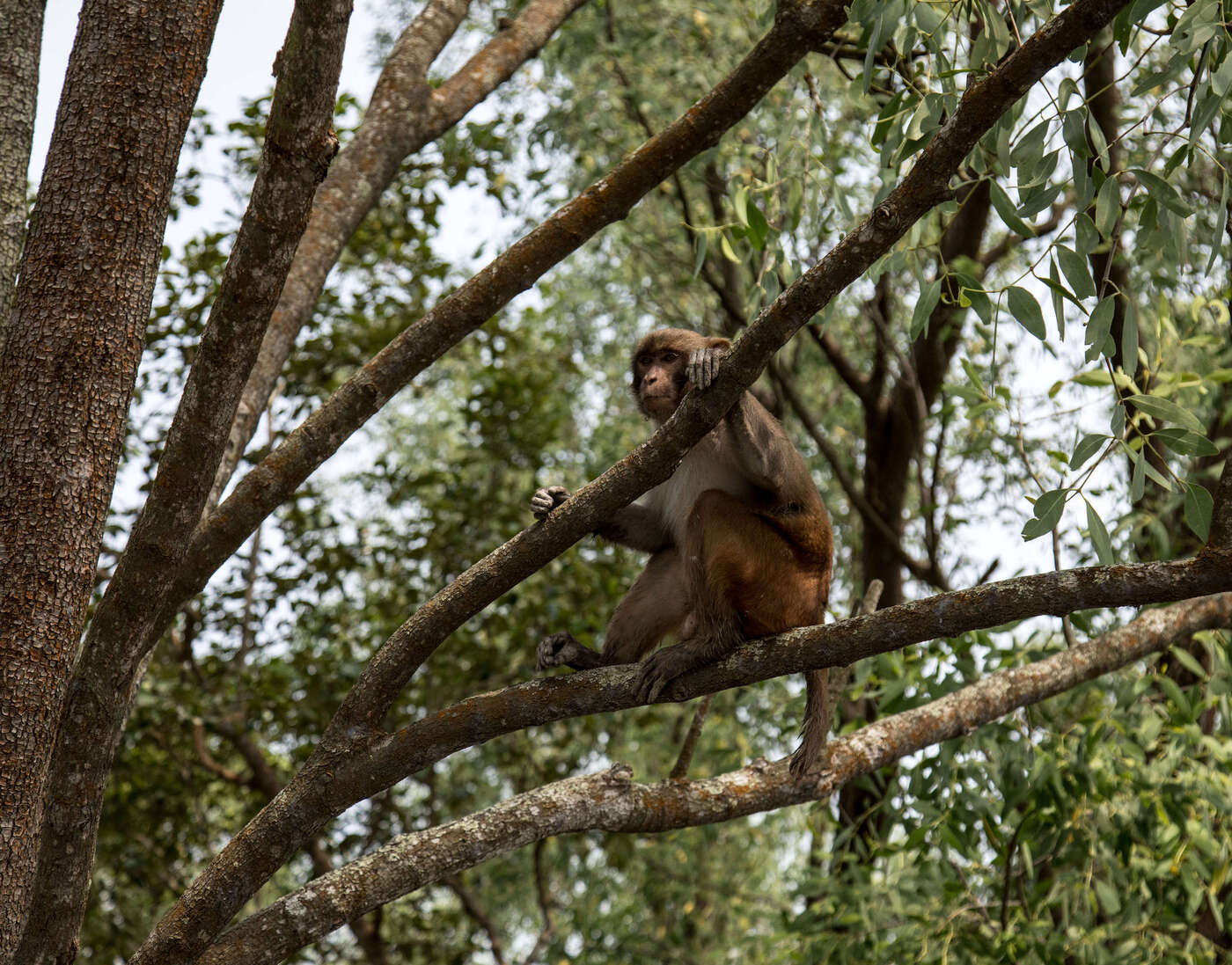
Ending ecocide in the tropics
Mangroves are being deforested and depleted at an alarming rate of 1-2% a year. Large swathes of coastal land is being converted for aquaculture and agriculture such as shrimp ponds and rice fields. Deforestation is placing over one hundred million people that live close to mangroves under threat; and countless more if the loss of carbon storage is not contained.
EJF has long worked to defend mangroves. Combining our seafood and forests expertise in hard-hitting investigations into the devastation of mangroves for shrimp farming, we have been a voice for change since 2003.
Our international campaign to expose the environmental and human rights abuses linked to shrimp farming has spanned Brazil, Honduras, Bangladesh, Vietnam and Thailand.
The shrimp industry has brought a host of ills to coastal communities in all these countries: food insecurity as fisheries decline, water pollution and resulting health issues, appalling working conditions, crime and child labour. Shrimp farms have also blocked access to the sea, leaving rural communities increasingly marginalised in degraded environments.
Documenting the testimonies of people directed affected by deforestation in Bangladesh, EJF built both an environmental case against shrimp farming and a human rights one – informed by the suffering inflicted by this greedy industry.
The link between deforestation and deaths
The increased vulnerability of coastlines due to deforestation is already taking its toll. The destruction of mangrove habitats for shrimp farms, tourist resorts, agricultural and urban land over the past decades contributed significantly to the catastrophic loss of human lives and settlements during the 2004 Indian Ocean tsunami.
Conserving and restoring coastal mangrove areas is essential if coastal communities are to be protected from similar events.
Successfully stopping mangrove deforestation in Brazil
In 2007, EJF worked with the Brazilian coalition SOS Abrolhos to successfully protect coastal areas from plans for a shrimp farm the size of Heathrow. Previously, our training for the Forum for the Defence of the Ceara Coast led to a film being shown on Brazilian television and at public hearings into shrimp farm development.

Protecting mangrove forests for healthy oceans
Mangroves are intimately connected to seagrass beds, coral reefs and other vital ecosystems; with nearly two-thirds of all fish harvested depending on mangroves at some stage of their life cycle. Root by root, the shrimp industry is dismantling the cradle of fish populations, with devastating results for coastal communities worldwide.
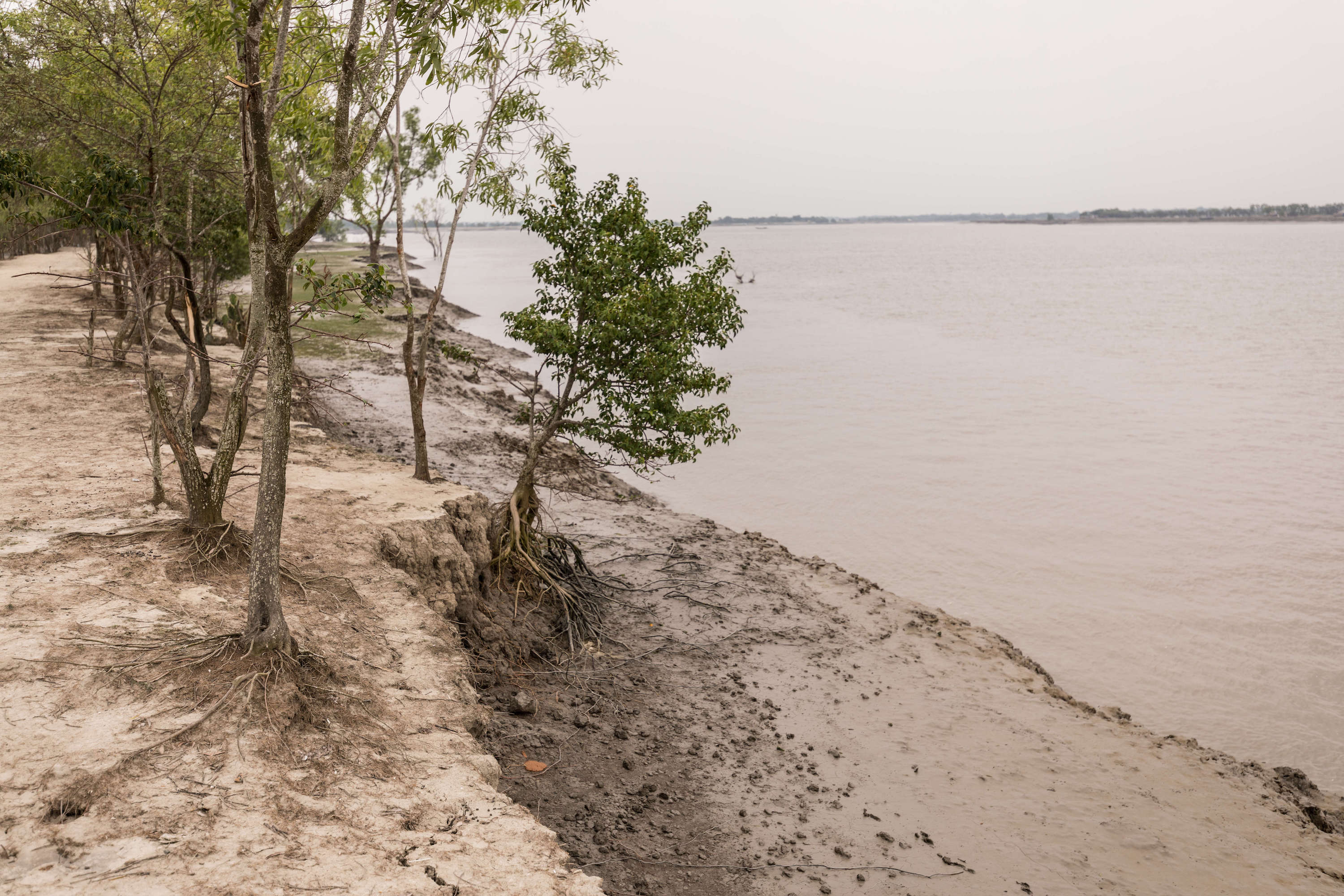
Raising international awareness about the critical need to protect mangrove forests is inseparable from our campaigns for climate action, and building sustainable fisheries.
What can you do for mangroves?
We are all connected to the world wide web of mangrove ecosystems. This means wherever you are in the shrimp supply network, there’s a good deal you can do to be part of the solution for mangroves. Join EJF in our calls for industry change.
Countries should:
- Ensure access to mangroves for sustainable harvesting of shellfish to local Indigenous communities;
- Campaign on a massive, global scale for mangrove replanting, beginning in low-lying geographies most at risk from sea-level rise, such as Bangladesh.
- Establish moratoria on shrimp farm developments in mangrove areas.
Companies should:
- Aid reforestation of mangroves where damage has been done - as a matter of environmental justice and to return all the life-giving benefits of mangroves to those who need them most.
Consumers can:
- Demand that shrimp importing countries help monitor independent shrimp certification, based on tight social and environmental criteria.
- Call for shrimp farming countries to enforce policies to protect mangroves from industry exploitation.
- Demand your retailer can prove that the shrimp they sell have not caused mangrove loss or driven local communities form their land. Companies should be able to provide full transparency from pond to plate. If they can't, don't buy, and tell them why.
- Join our campaign to protect these wonderful habitats and the people and wildlife that depend on them.
Make sure you only buy shrimp from recognised labels free from environmental destruction and human rights abuse. EJF’s Consumer Guide to Prawns aims to clarify the issues, helping you make the right choices.
SIGN UP FOR OUR EMAILS AND STAY UP TO DATE WITH EJF
